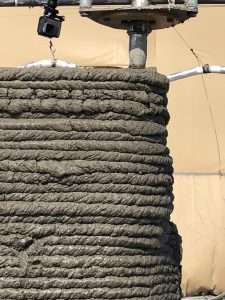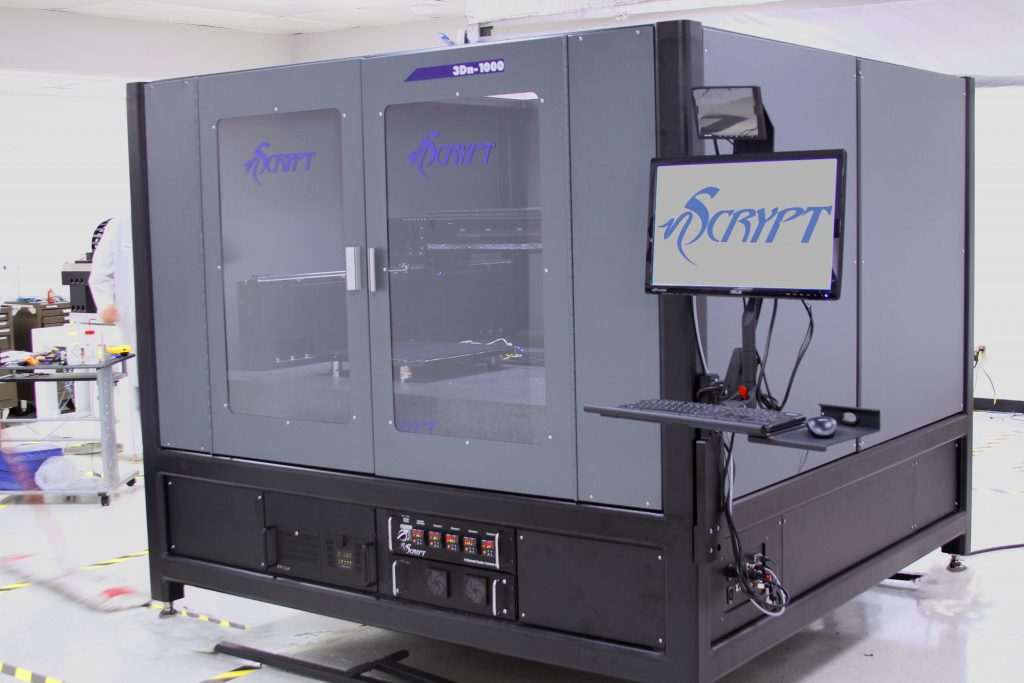At Camp Pendleton in Southern California, mechanical engineer Megan Kreiger with the US Army Engineer Research and Development Center spent some time recently working with a team on a project that would have been unheard of not too long ago: a 3D printed bridge. Thanks to developments in large-scale 3D printing technology and construction materials, there are now several 3D printed bridges, both metal and concrete, installed around the world. Kreiger and her team 3D printed a 32-foot-long reinforced concrete footbridge, but Kreiger has bigger goals in mind. She wants to 3D print a modern-day version of a Bailey bridge.
“It would be phenomenal if we could make a bridge that could support a tank,” she said.
3D printing the footbridge wasn’t exactly easy, though, thanks to the weather – when Kreiger first arrived, it was raining so hard that there were mudslides.
“It’s hard to print in torrential downpours,” she said. “It was crazy.”
The bridge was successfully printed, however, and it wasn’t the first successful large-scale 3D printing project that Kreiger has led. She was involved in last year’s endeavor to 3D print concrete barracks, the first full-scale 3D printed reinforced concrete building in the United States engineered for permitting. 32 x 16 feet with eight-foot-tall walls, the barracks was 3D printed using a deployable printer designed to be used by troops in remote locations.
Kreiger first learned about 3D printing at Michigan Technological University, where she ran the 3D printing lab during her graduate studies in material science and engineering. She joined the US Army Engineer Research and Development Center in 2015, and has been responsible for the development of a new type of concrete for 3D printed construction. She and her family own three 3D printers themselves, one that she built herself. They have 3D printed a variety of items, including an orange juicer, magnets, brackets and self-scans.
Captain Matt Friedell is Program Manager for the Marine Corps Systems Command’s construction additive manufacturing, the main sponsor for the 3D printed barracks project. He was impressed by Kreiger’s passion for the technology when he first met her in 2016.
“She spoke in grand terms of where the technology will take humanity in the future,” he said. “She took that vision and used it as the kindling to ignite others’ imaginations.”
Kreiger’s enthusiasm for additive manufacturing and construction has led her to build great things with the technology already, and she has plenty of plans to create a lot more in the future. Not only does 3D printing cut back on the human labor required for construction, it allows for quick establishment of housing, bridges and more in remote, otherwise hard to reach areas – which can be a lifesaver for not only the military but civilians as well.
“My goal is to establish additive construction as a viable method and introduce the benefits of large-scale 3D printing to military and commercial construction,” Kreiger said. “I want to push forward and test the limits of the construction industry.”
Discuss this and other 3D printing topics at 3DPrintBoard.com or share your thoughts below.
[Source: Engineering News Record]




 tool head for Material Extrusion, SmartPump
tool head for Material Extrusion, SmartPump










